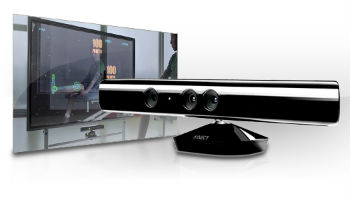Microsoft is adding new 3D scanning capabilities to its Kinect sensor, a move that signals that the software giant is getting serious about pushing its gesture-based vision of computing.
The release of Kinect for Windows software development kit (SDK) 1.7 on 18 March ushers in new features that will help developers get a jump on bleeding-edge technologies like augmented reality and 3D printing, according to Bob Heddle, director of Kinect for Windows. Among them is the GPU-assisted 3D scanning tool Kinect Fusion.
Affordability
In a blog post, Heddle explained, “Kinect Fusion is one of the most affordable tools available today for creating accurate 3D renderings of people and objects. Kinect Fusion fuses together multiple snapshots from the Kinect for Windows sensor to create accurate, full, 3D models. Developers can move a Kinect for Windows sensor around a person, object or environment and ‘paint’ a 3D image of the person or thing in real time.”
 Kinect Fusion supports DirectX11-compatible graphics cards. Microsoft said that AMD’s Radeon 7950 and NVidia’s GTX560 graphics cards have been validated to run at interactive rates, essentially in real time.
Kinect Fusion supports DirectX11-compatible graphics cards. Microsoft said that AMD’s Radeon 7950 and NVidia’s GTX560 graphics cards have been validated to run at interactive rates, essentially in real time.
A non-real-time CPU mode is also supported. Kinect Fusion Studio and samples are also included.
The company also hints that Kinect Fusion can handle some challenging 3D scanning jobs. It features “advanced algorithms that are powerful enough for large sensor movements and scene changes during scanning”, Microsoft officials boasted.
The possibilities are countless, added Heddle. For instance, with access to Kinect-powered body scanning, health care companies can provide “better-fitting orthotics”. Likewise, retailers can offer clothes shoppers a more personalised experience. Industrial designers can view and manipulate renderings in real time.
Kinect for Windows SDK 1.7 is a major step forward, according to Heddle. “This is our most significant update to the SDK since we released the first version a little over a year ago, and I can’t wait to see what businesses and developers do with the new features and enhancements.”
Venturing into 3D scanning a year after the release of version 1.0 of the Kinect for Windows SDK falls in line with the Microsoft’s goals of rapidly advancing the platform, which first gained popularity on the Xbox and among the hacking community.
Regular SDK updates
On 31 January, 2012, Craig Eisler, general manager of Kinect for Windows, said, “Looking toward the future, we are planning on releasing updates to our SDK and runtime two to three times per year. We are continuing to invest in programmes like our Testing and Adoption Programme and the Kinect Accelerator, and will work to create new programmes in the future.”
In addition to Kinect Fusion’s ability to generate 3D models, Microsoft is also keen on allowing users to get their hands on them, virtually speaking.
The SDK includes Kinect Interactions, a toolset for developing gesture-based apps based on thousands of hours of R&D and testing. Interactions provides a connect cursor and a user viewer. Users can manipulate virtual objects and other on-screen elements with new push-and-grip controls.
Also new are OpenCV and MATLAB samples along with Kinect for Windows Code Samples on CodePlex, Microsoft’s open-source code-hosting service.
Are you a Google expert? Take our quiz!
Originally published on eWeek.




